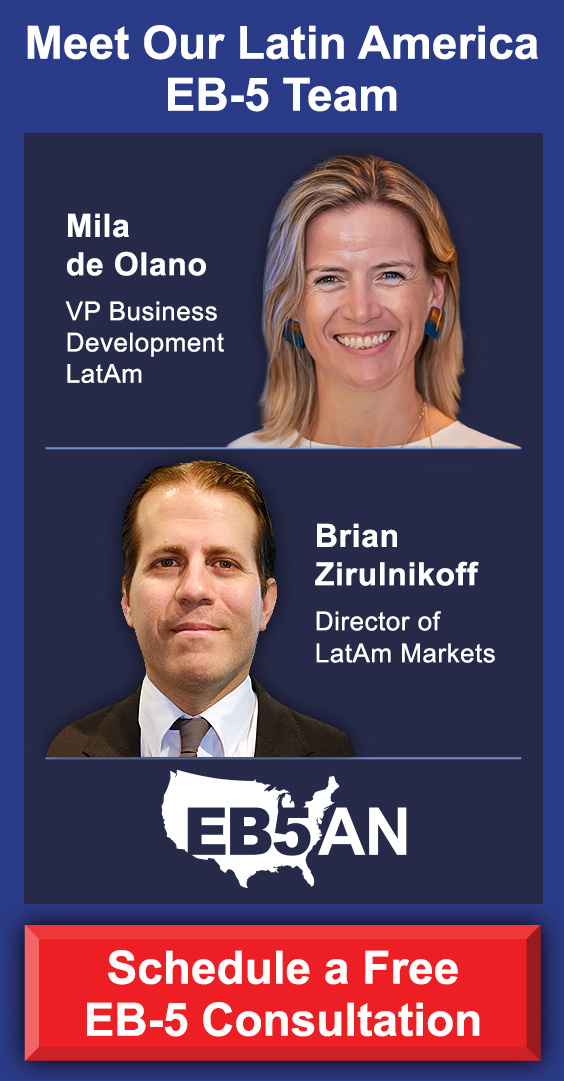For Indian nationals pursuing the EB-5 Immigrant Investor Program, securing a U.S. Green Card offers an opportunity to invest in their families’ future. One crucial factor that many investors may not fully understand is how the dependent age-out rule affects children of EB-5 applicants. This rule, combined with the Child Status Protection Act (CSPA), can play a pivotal role in determining whether a child remains eligible for a Green Card through their parent’s EB-5 petition.
Given the potential delays in visa availability for Indian applicants, it is important for investors to act swiftly to ensure their children’s eligibility for permanent residency before they age out. In this article, we will explain the necessary details.
Understanding the Dependent Age-Out Rule
The Role of the Child Status Protection Act (CSPA)
Why the EB-5 Program May Be the Best Option
EB5AN Can Help Your Children Become Green Card Holders
Understanding the Dependent Age-Out Rule
The EB-5 program grants a Green Card to investors and their immediate family members, including their spouse and children under the age of 21. However, the path to obtaining this Green Card can be complicated, particularly due to the dependent age-out rule.
According to U.S. immigration law, children of EB-5 applicants must be under 21 years old and unmarried at the time their parents’ Green Card application is approved in order to qualify as dependents. If a child turns 21 before the approval of their parent’s petition, they are no longer considered a dependent and would need to pursue their own immigrant status. This can potentially create a serious issue for investors who have children approaching the age of 21.
The Role of the Child Status Protection Act (CSPA)
Fortunately, the Child Status Protection Act (CSPA) offers a safeguard to help preserve the eligibility of children who might otherwise age out of the EB-5 process. Enacted in 2002, the CSPA provides a mechanism to “freeze” a child’s age for immigration purposes, allowing them to retain their dependent status even if they turn 21 before the EB-5 petition is processed. However, understanding how the CSPA applies to Indian EB-5 investors is crucial, as the nuances of the law can be complex.
Under the CSPA, the child’s age is calculated at the time a visa becomes available. The law allows for certain time periods, such as processing delays, to be excluded from the child’s age calculation. For example, if a child is close to turning 21 but the petition is delayed in processing or the priority date is not yet current, the CSPA may “subtract” this delay from the child’s actual age, thus maintaining their eligibility as a dependent.
To benefit from the age protection under the CSPA, the child must also take steps to apply for their visa within one year of the visa becoming available—a requirement known as ‘seeking to acquire.’
Although all reserved set-aside categories are still current, for Indian EB-5 investors, the backlog for visa processing can be long, with Indian nationals often experiencing some of the longest waiting times for visa issuance due to the high demand for Green Cards. This is especially the case under employment-based visa categories like EB-1, EB-2, and EB-3. As a result, the CSPA becomes an essential tool for preserving the eligibility of children who are on the cusp of turning 21. The ability to freeze the child’s age based on the date their priority date becomes current could be the difference between obtaining a Green Card and being forced to seek a different path to permanent residency.
Why the EB-5 Program May Be the Best Option
For many Indian families, the EB-5 program represents the best chance to secure permanent U.S. residency and to protect their children’s future in the United States. With the potential to freeze a child’s age under the CSPA, parents can take steps to ensure that their children can benefit from their EB-5 investment, even in the face of potential backlogs.
Unlike family-based immigration paths that rely on immediate family members or employment-based paths that have stringent criteria to fulfill, the EB-5 program offers a more direct and predictable route to obtaining Green Cards. By investing in a U.S. new commercial enterprise that creates 10 full-time jobs for U.S. workers, the investor and their family members can secure their residency status without waiting for the long visa queues that other categories typically face. The ability to include children under 21 years old further enhances the program’s appeal to Indian nationals seeking to provide a better future for their family.
Moreover, with the changing immigration landscape in many countries, including the recent introduction of new visa policies, the EB-5 program provides a level of certainty that other paths might not. By investing early and locking in their children’s eligibility under the CSPA, parents can ensure that their children remain eligible for Green Cards even if they are approaching the age of 21 during the process.
Timing Is Key
To take full advantage of the CSPA and protect a child’s Green Card eligibility, timing is crucial. Parents considering the EB-5 route should act as soon as possible to ensure that their children do not age out of the process. By filing their EB-5 petitions early, investors can minimize the risk of their children turning 21 before receiving final approval.
The Indian EB-5 applicant should also be aware that while the CSPA is a safeguard, it does not guarantee that a child’s age will always be protected. The CSPA’s application depends on the specific timing of the petition’s processing and other individual circumstances. Therefore, it is advisable for potential investors to consult with an experienced EB-5 immigration attorney to navigate the complexities of this process.
EB5AN Can Help Your Children Become Green Card Holders
For Indian EB-5 investors, securing a U.S. Green Card is more than just a financial investment—it is an opportunity to ensure that their family’s future is secure. Understanding the implications of the dependent age-out rule and how the CSPA can protect children’s eligibility is essential.
By consulting with legal experts and filing early, Indian EB-5 investors can ensure that their family members, particularly their children, are included in the process and can benefit from the Green Card once it is approved. As the demand for U.S. visas continues to grow, understanding how the CSPA works and planning accordingly can be the key to securing the future of your children and family in the United States.
EB5AN has helped more than 2,300 families from 70+ countries become lawful permanent residents of the United States. Our team has more than a decade of experience and offers clients first-rate, low-risk EB-5 regional center projects with a 100% USCIS project approval rate.
If you would like to know more about your family’s EB-5 investment options, book a free call with our expert team today.









